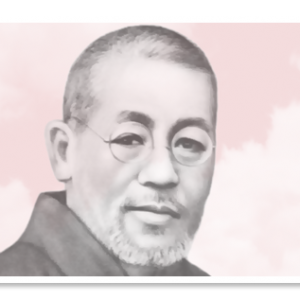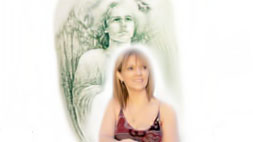Reiki

Life of Dr. Mikao Usui
Mikao Usui was born on August 15, 1865 in the village of ‘Taniai-mura’ (now called Miyama-cho) in the Yamagata district of Gifu prefecture, and he died on March 9, 1926 in Fukuyama. He had an interesting life. He grew up in a Tendai Buddhist family and had a sister and two brothers, one of whom studied medicine. As a child he entered a Tendai Buddhist monastery near Mt. Kurama (“Horse Saddle Mountain”). He would have studied ‘kiko’ (the Japanese version of Chi Kung) to an advanced level – and maybe practised projection healings – and he was exposed to martial arts too. From the age of 12 he trained in a martial art called Yagyu Ryu – Samurai swordsmanship – in which he attained the level of Menkyo Kaiden in his 20s, this being the highest licence of proficiency in weaponry and grappling. He continued training in the Arts and reached high levels in several other of the most ancient Japanese methods. He was renowned for his expertise and highly respected by other well-known martial artists of his time.
In his younger life he experienced much adversity, lack of money, no security or regular employment. He seemed not to attach importance to material things and was regarded as something of an eccentric. He married, his wife’s name was Sadako, and they had a son (born 1907) and daughter. Usui followed a number of professions: public servant, office worker, industrialist, reporter, politician’s secretary, missionary, and supervisor of convicts. Usui was private secretary to Shimpei Goto, who was Secretary of the Railroad, Postmaster General, and Secretary of the Interior and State. The phrase ‘politician’s secretary’ can be taken as a euphemism for ‘bodyguard’! It is during his time in diplomatic service that he may have had the opportunity to travel to other countries. In 1868 (when Usui was 3) there was restoration of rule by Emperor, the Meiji Restoration. Mutsuhito reigned until 1912 and selected a new reign title – Meiji, which means enlightened rule – to mark a new beginning in Japanese history. It is known that Usui travelled to China, America and Europe several times to learn and study Western ways, and this practice was encouraged in the Meiji era. At some point Usui became for a while a Tendai Buddhist Monk, or Priest, (maybe what we in the west call a lay priest) but still having his own home, not living in the temple. This is called a ‘Zaike’ in Japanese: a priest possessing a home.
Usui Sensei was interested in a great many things and seems to have studied voraciously. His memorial states that he was a talented hard working student, he liked to read and his knowledge of medicine, psychology, fortune telling and theology of religions around the world, including the Kyoten (Buddhist Bible) was vast. There was a large University library in Kyoto, and Japanese sources believe that he would have done most of his research there, where sacred texts from all over the world would have been held. He studied traditional Chinese medicine and Western medicine, numerology and astrology, and psychic and clairvoyant development. Usui also took Zen Buddhist training in 1922 for about three years. Many different spiritualist/healing groups were in existence at the time, and one of these – attended by Usui – was ‘Rei Jyutsu Kai’. Today this organisation consists of the most spiritual monks and nuns in Japan, psychics and clairvoyants.
Reiki in Japan
Now the story turns full circle, and Western style Reiki has returned to its country of birth. At one stage people believed that Reiki had died out in Japan, and that the only Reiki that remained in the world was the Western version. But Reiki Masters travelling in or living in Japan in the 1980s and 1990s discovered that there were Reiki practitioners there who were doing things that were very different from the Reiki that we had become used to in the West. It was also discovered that there was an association called the Usui Reiki Ryoho Gakkai (Usui’s Reiki Healing System Association) which to begin with seemed to have been established by Usui. Now we know that this is not the case. The Gakkai was set up as a sort of ‘memorial’ society by the three Naval Officers. Tatsumi described it as an ‘officer’s club’ and now it has almost the sort of place in Japanese society that Freemasons occupy in the West: most people have heard of the ‘Gakkai, but they are not quite sure what they do. It’s all a bit mysterious but you need to be a member if you are going to get on in business in politics.
As well as the ‘Gakkai’, there are other Reiki practitioners in Japan whose Reiki to varying degrees follows some of Usui’s original form of Reiki.
Now Japan is experiencing a big explosion of Reiki, but it is mostly Western-style.
Roots of Reiki
Usui also took Soto Zen training with Kanazawa, mentioned in the book “Crooked Cucumber” (biography of Shunryu Suzuki, a Zen Buddhist monk partly responsible for introducing Zen Buddhism to America) – Kanazawa was a close friend. Japanese people followed several paths at a time, so Usui can have been a Tendai Buddhist but followed Soto Zen for a while.These studies may have contributed in some way to the system that he developed, and there also seems to be a strong connection between Usui’s system and Shugendo (mountain asceticism). Shugendo was a blend of pre-Buddhist folk traditions of Sangaku Shinko and Shinto, Tantric Buddhism, Chinese Yin-Yang magic and Taoism. Interestingly, Usui Sensei’s precepts are his rewording of a set of precepts used in a Tendai sect of Shugendo and which can be traced back as far as the early 9th century.
Japan in Usui’s Time
Mikao Usui grew up at a time when Japanese society and culture was going through a period of rapid change. It was not until the 1850s that Japan opened itself up to the Western world; for two centuries starting in 1641, all Europeans except the Dutch had been expelled from Japan. Those Chinese and Dutch that remained were confined in special trading centres in Nagasaki, and no Japanese were allowed to leave the country.
Christianity was declared illegal and all Japanese were forced to register at Shinto temples. Those Japanese who refused to renounce Christianity were executed, and so were a few Christian missionaries who refused to leave the country. This ban on Christianity was not lifted until 1873.
It was the United States that finally forced Japan to open its borders, and open its economy, to the outside world, and this event led to a great flood of new ideas and esoteric systems coming into Japan from all over the world. Not only that, but Japan underwent a period of rapid industrialisation, transforming itself from a feudal society into an industrialised nation – able to compete with the West on an equal footing – within a period of only 30-40 years. Such a period of rapid change created a real climate of ‘wanting to keep hold of traditional culture’.
Japan was looking for a spiritual direction and people wanted to rekindle and maintain ancient traditions, while embracing the new. This is what Usui did when he developed Reiki. In the time when Usui was growing up, Japan was a melting pot of new ideas, with many new spiritual systems and healing techniques being developed. Reiki was one of these systems.
Welcome to Pure Reiki!
Reiki, as a natural system of healing, was re-discovered by Dr. Mikao Usui in the latter part of the 19th century. Reiki was brought to the West by Mrs. Hawayo Takata, Reiki Master par excellence. Today, the Usui System of Reiki Healing is practiced throughout the world. A more detailed “history” of Reiki is shared by a Reiki Master in a Reiki Level I Class.
Everything you need to know about Mikao Usui’s simple healing system.
This section could almost be given the subtitle of ‘how a simple self-healing and spiritual development system ended up being presented to the world as a hands-on treatment technique’. You can read below about the background to the development of the system, about what we know of Mikao Usui’s life, what he taught, how he taught, who he associated with, and how the system ended up being taught in the West.




